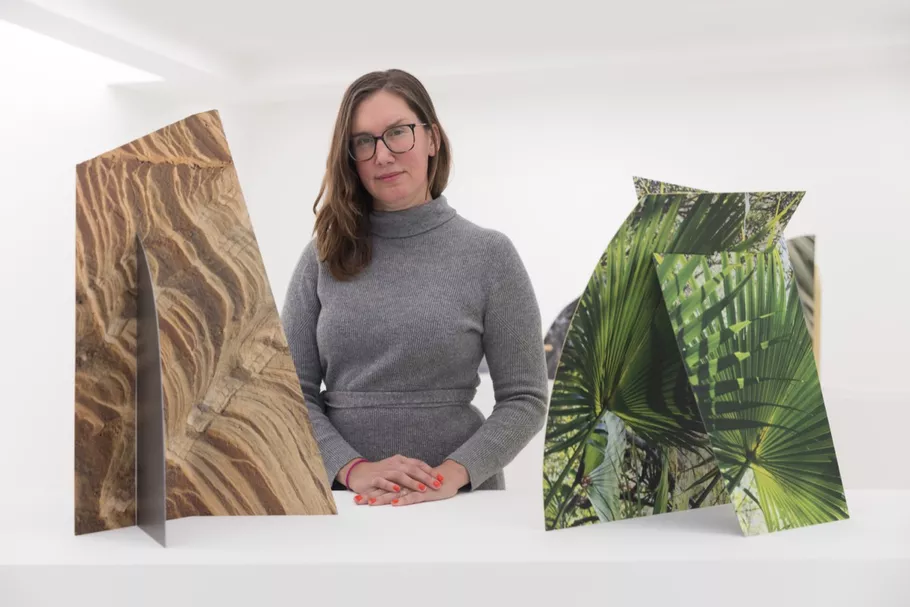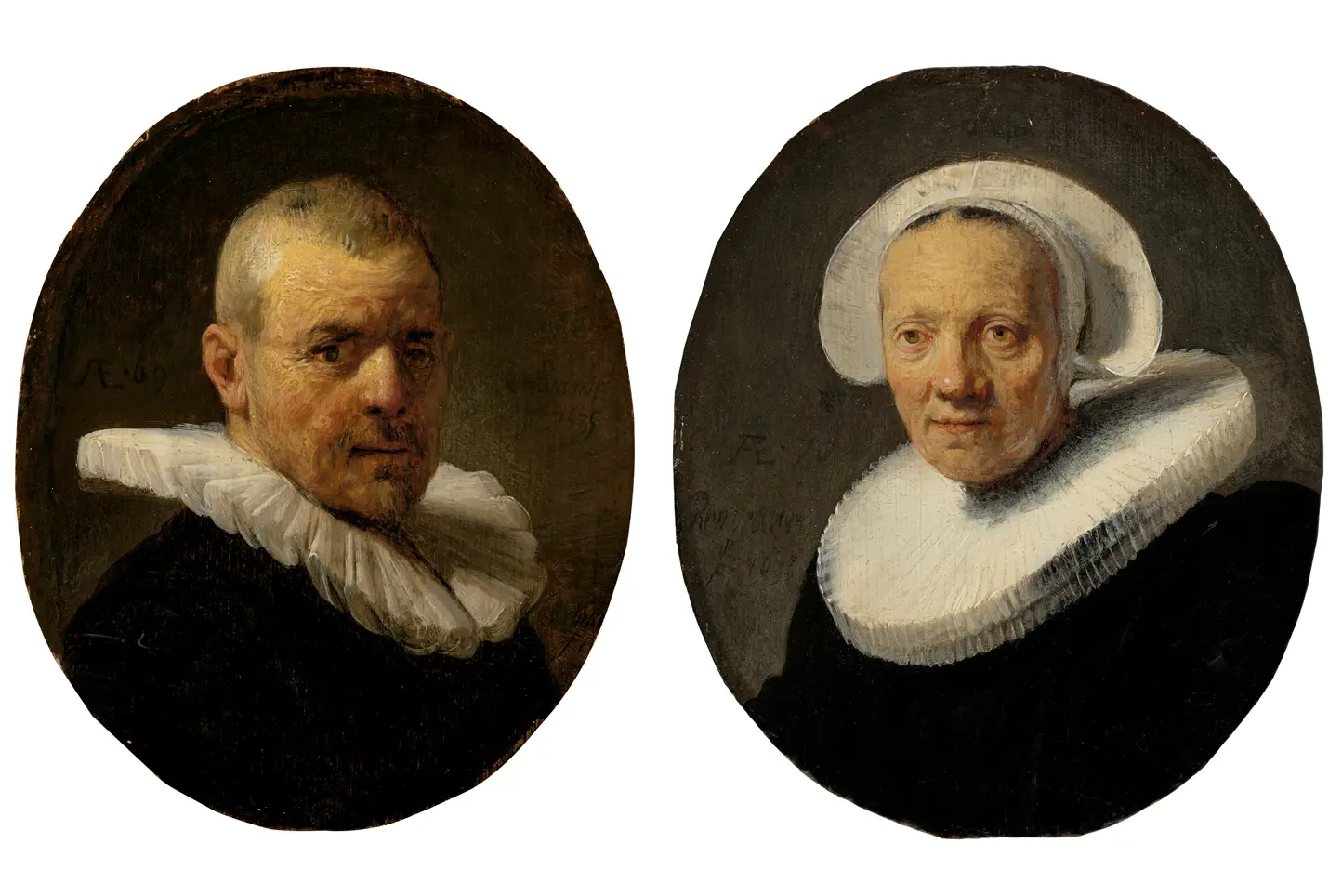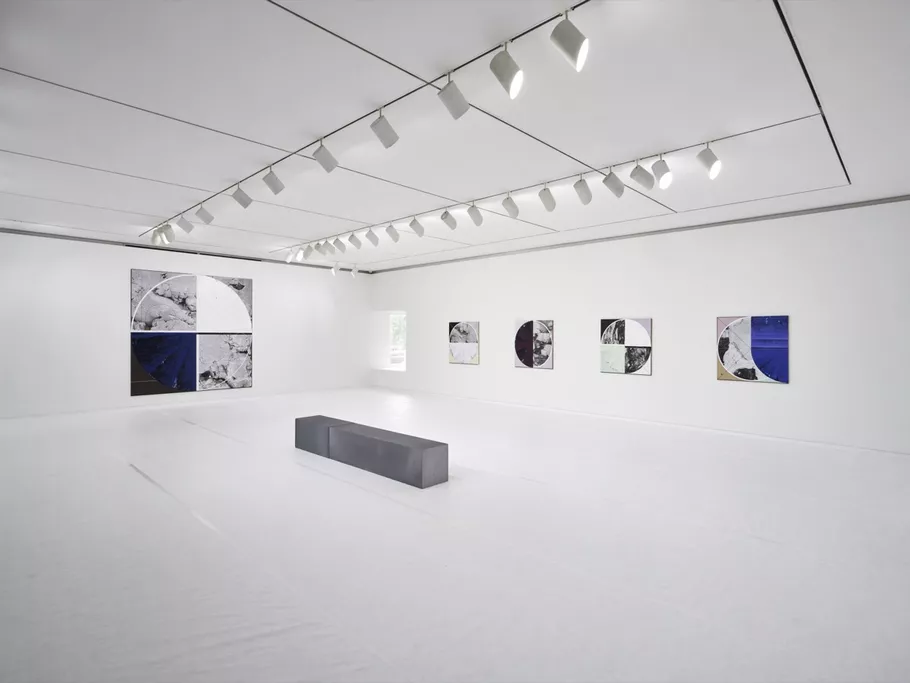Landscape photography holds a profound place in the cultural identity of the United States.
Landscape photography holds a profound place in the cultural identity of the United States.
- Letha Wilson transforms landscape photography into industrial sculptures.
- She uses nature photographs printed on metal and folds them into dynamic compositions.
- Her process involves three stages: capturing images, studio interaction, and meticulous metalwork.
andscape photography holds a profound place in the cultural identity of the United States. The iconic images created by pioneers like Carleton Watkins, William Henry Jackson, and Ansel Adams not only conveyed the grandeur and wonder of nature but also shaped our understanding of place, influencing cultural and political notions of nationhood.
However, contemporary artist Letha Wilson, who earned her MFA from New York’s Hunter College in 2003, approaches landscape photography in a distinct and transformative manner. For Wilson, a photograph serves as merely the starting point of her artistic journey, not its conclusion. She takes these images and subjects them to a creative process that leads to the creation of geometric sculptural compositions, effectively compressing the essence of nature into an industrial framework.
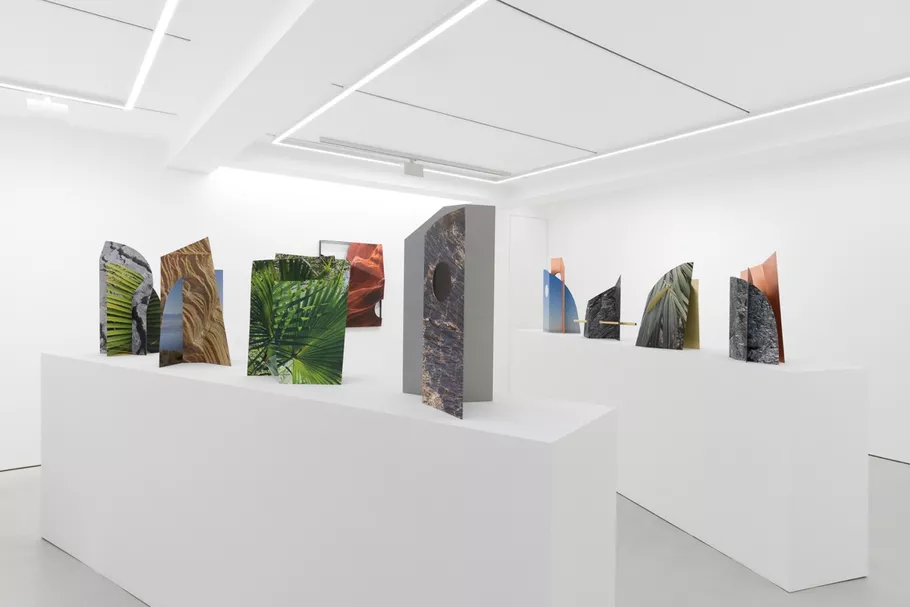
Time and scale emerge as central motifs in the exhibition, evident in both subject matter and artwork dimensions. However, the individual pieces could be considered relatively shallow. While references to the sublime and artists like Courbet and O’Keeffe are apparent, Party’s color palette and smooth style evoke commercial aesthetics, akin to vintage packaging designs. Dinosaur works resemble sentimental postcards, hinting at the history of scientific illustration and its inadvertent misinterpretations. A lone dinosaur piece, positioned subtly, signifies anthropomorphic solitude, highlighting the overshadowing of one crisis by a more imminent threat.
While Wilson often incorporates industrial materials into her art, her choice of materials has evolved over time. She initially began with drywall, inspired by her experiences handling such materials in her job of building and repairing gallery walls. Her artistic palette expanded to include plaster, drywall, two-by-four timber, concrete, and eventually steel.
Her latest works, exhibited at GRIMM in London (the latest addition to the gallery’s locations in New York and Amsterdam), refine her use of steel and introduce copper and brass into a collection of plinth-mounted sculptures and wall-based pieces. In the exhibition titled “Fields of Vision,” which opened on August 31st, 15 sculptures feature nature photographs printed onto metal, meticulously folded and interlocked to create a dynamic interplay between elements of nature, industry, and diverse geographical settings. Despite their appearance of simplicity, Wilson remarked that her works convey the struggle and complexity involved in their creation.
-
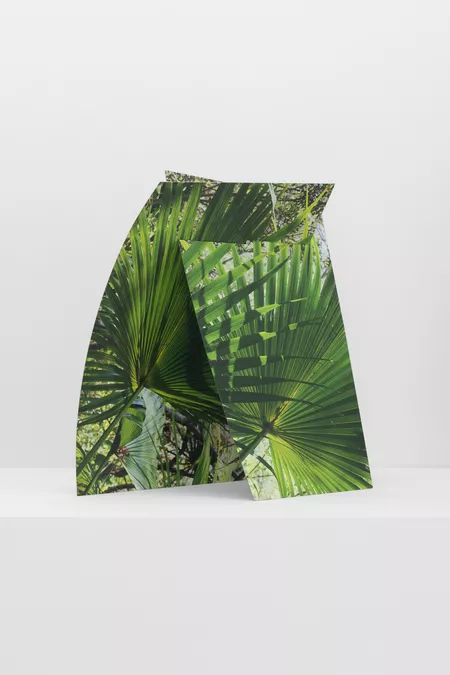
- Letha Wilson – Two Palms Lean, 2023 – GRIMM
-
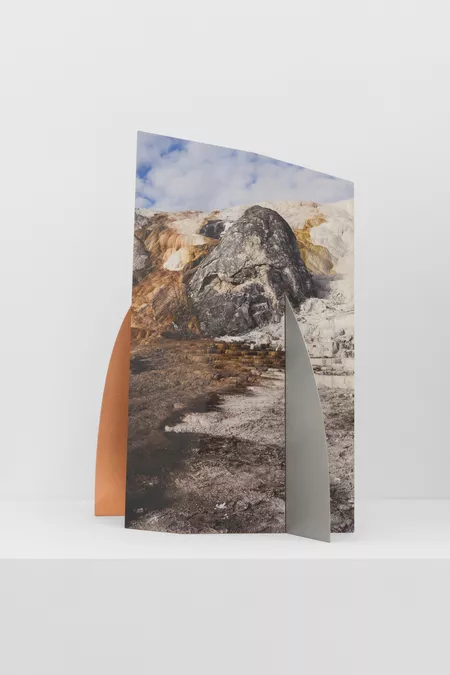
- Letha Wilson – Mammoth Springs Trio, 2023 – GRIMM

Wilson’s creative process unfolds in three stages. It begins with her extended solo journeys into the wilderness to capture the initial photographs. Often traversing landscapes previously photographed by luminaries like Adams, her mission is to observe, collect, and capture. While she appreciates the aesthetic beauty and inadvertent geometries she encounters, Wilson is also focused on capturing the atmosphere and recognizing fleeting moments.
Subsequently, these images become part of Wilson’s burgeoning studio archive, where she allows them to interact with one another and speak to her. She explores their connections before testing them with cardboard maquettes of interlocking fragments. Once she has determined the sculptural form at scale, the selected images are printed onto metal sheets and moved into her metalworking studio.
While she had previously relied on fabricators, in recent years, Wilson has relished the hands-on experience of shaping, cutting, bending, and joining materials herself. She invested in a folding brake for her studio during the summer to bend the metal, allowing her to undertake welding and plasma cutting.
The process is intricate and multifaceted. It demands both physical dexterity to manipulate metal (which Wilson appreciates for its resulting imperfections or “the residue of the activity”) and mathematical precision in ensuring that each fold and cut is precisely positioned to enable seamless plane intersections.
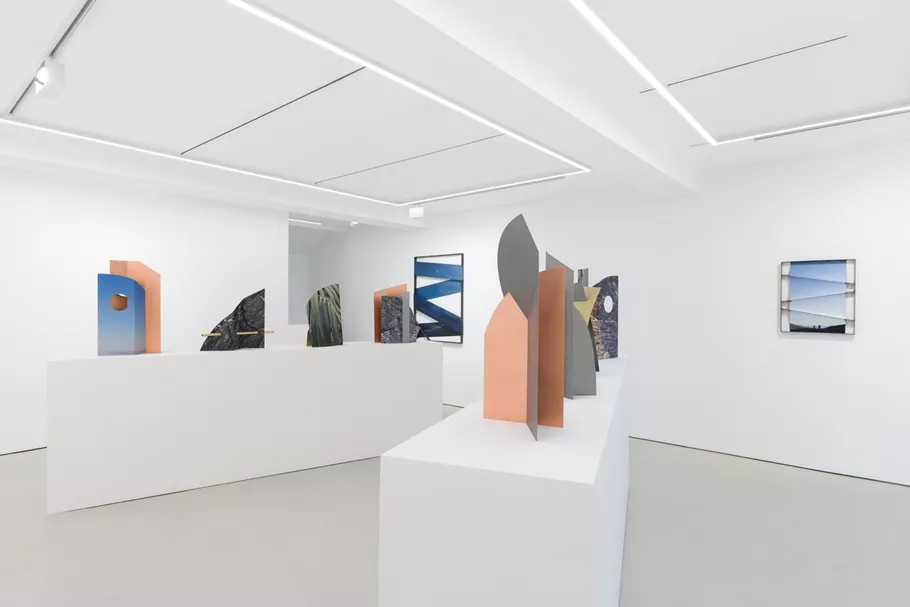
The sculptures showcased at the GRIMM exhibition represent amalgamations of abstracted landscapes reimagined as architectural forms. For example, “Idaho Sunrise Triple Bend” disrupts the flat blue plane of the clear sky by physically folding the image over the steel frame, highlighting the scars and marks of the physical processes. Titles of several sculptures hint at their captured locations, such as “New Mexico Moonrise Strips” and “Antelope Canyon Steel Fold.” “Craters of the Moon Brass Pierce” is a twice-folded detail shot of geological rock formations, punctured by a brass pole through thoughtfully placed and perfectly sized holes. The absence of a designated front or back invites viewers to explore varying impressions of materials, places, and geometry from different angles.
Wilson’s work speaks to the intricate relationship between nature and modernity. Whether stewarded by indigenous communities or managed by governmental entities, wilderness undergoes processes of manipulation, control, and framing. These processes, in turn, contribute to the creation of a romantic and culturally ingrained perception of nature—a phenomenon that constantly fascinates Wilson, much as it did Adams and earlier photographers.


